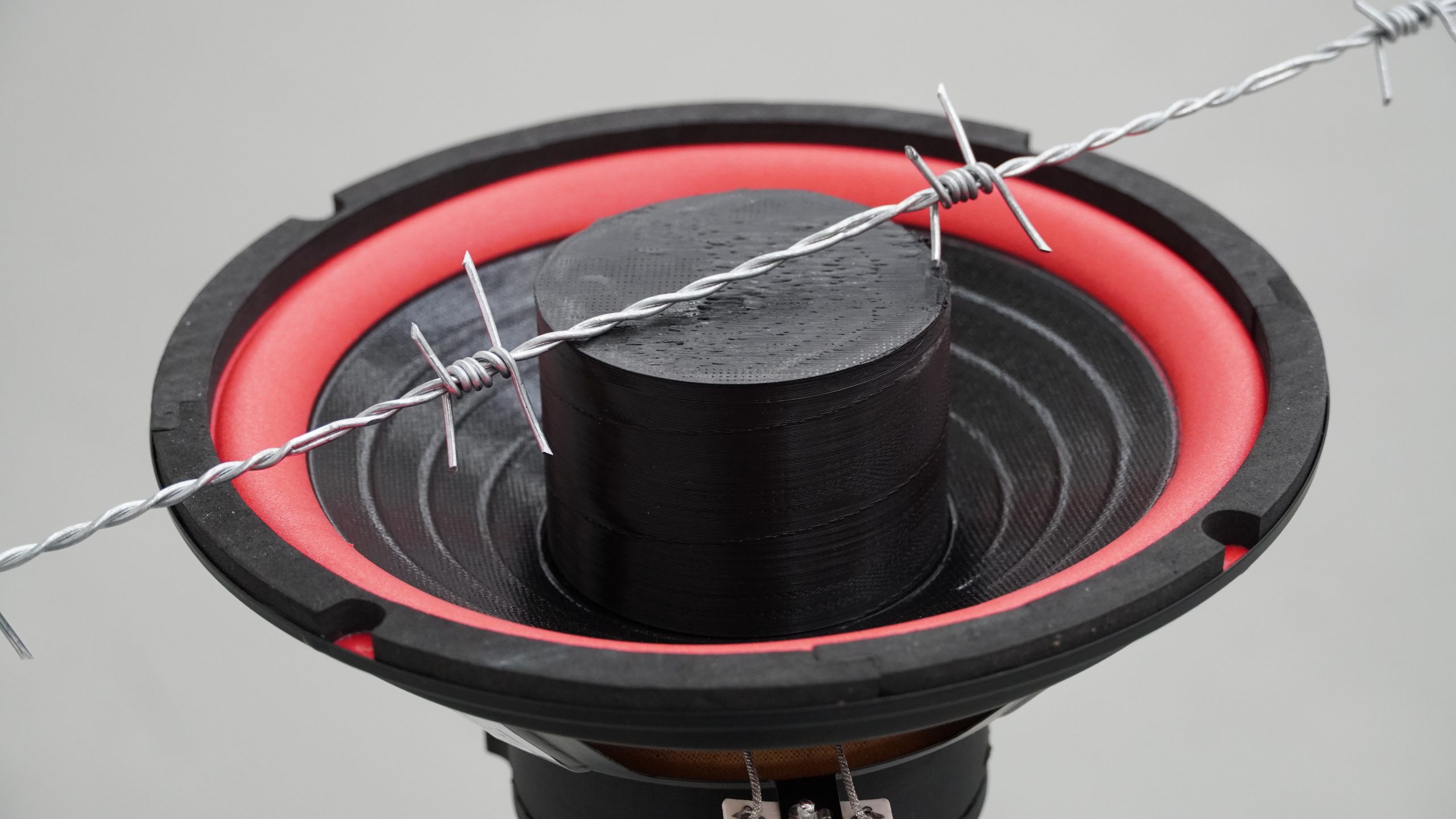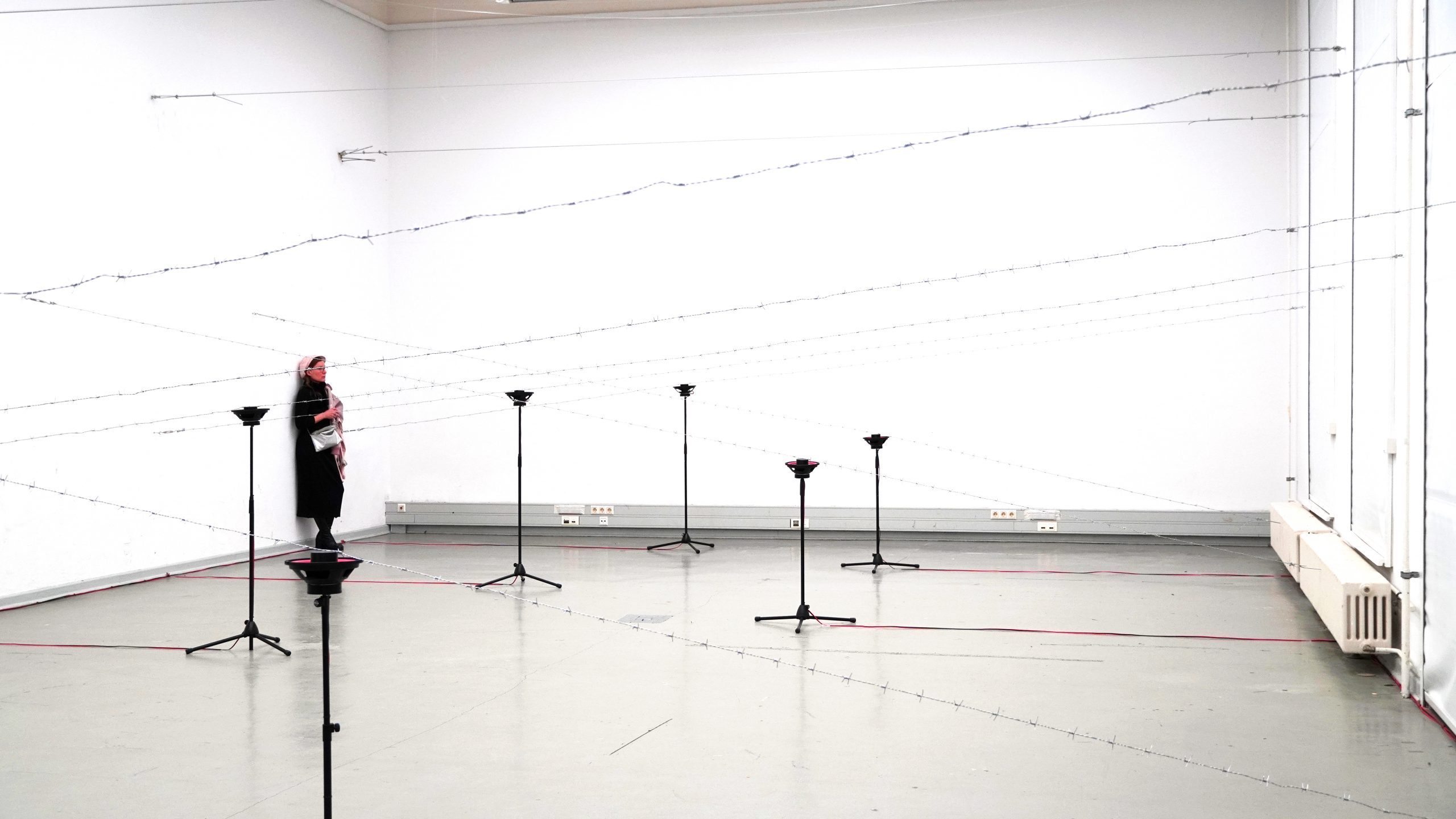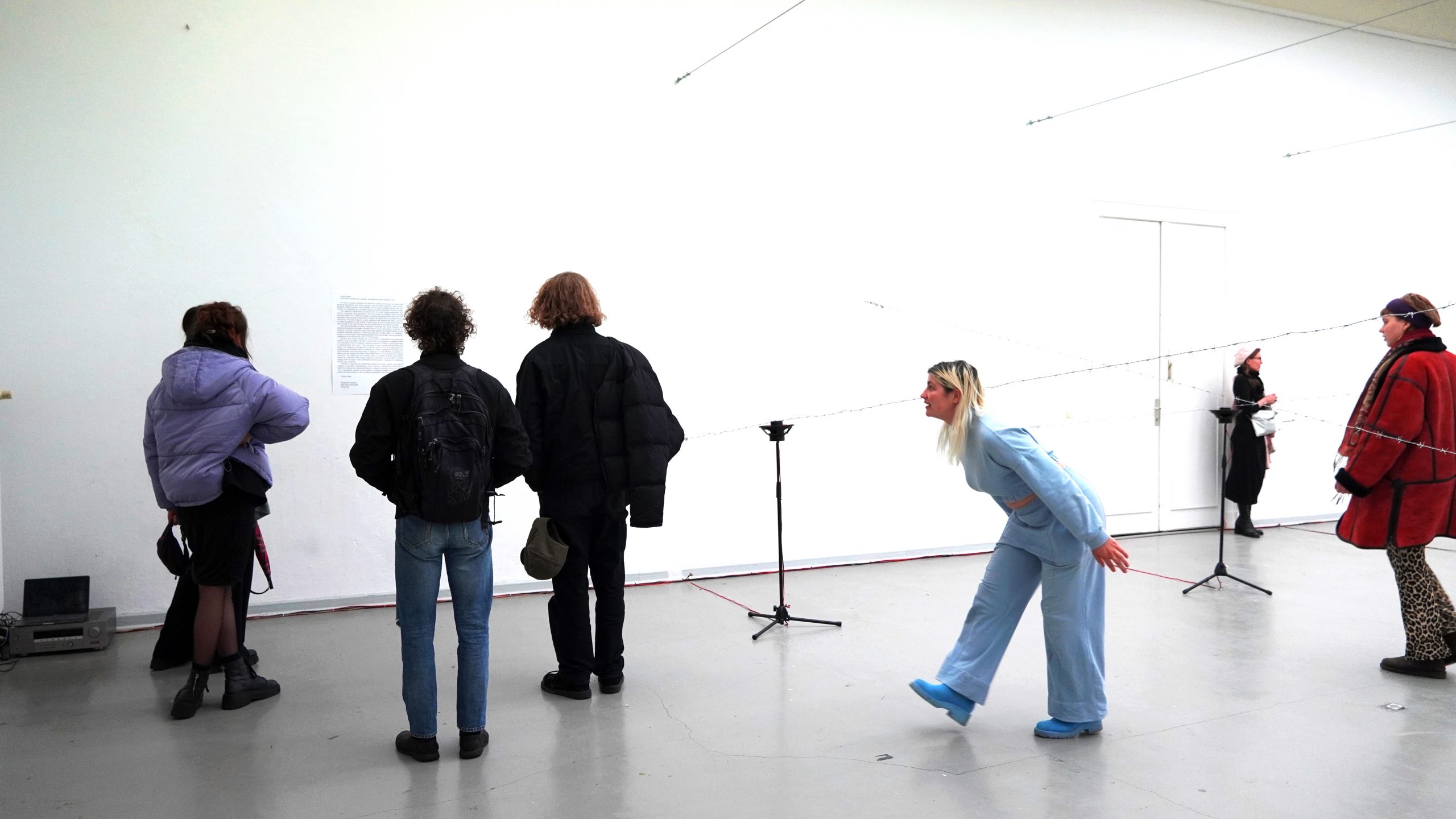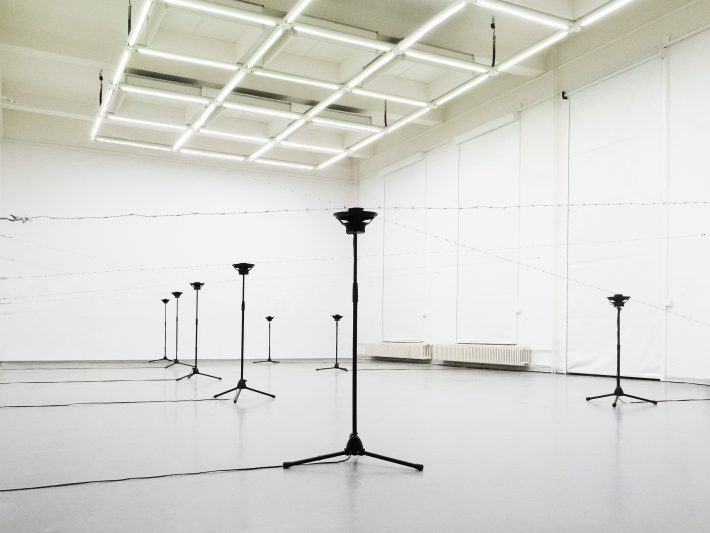Öskan Ertek
Devil’s Rope
barbed wire, turnbuckle, speaker, amplifier, MAX, arduino, microphone stand,
For over a century, barbed wire has been utilized extensively to demarcate territorial boundaries and define spaces, such as fields, pastures, urban areas, factories, military barracks, and countries. “Devil’s Rope,” employs barbed wire as a medium to contemplate the concept of borders and the intricacies of human mobility.
Using barbed wire and infrasound frequencies below human hearing (0-20Hz), the asymmetrically arranged installation intensifies the visual, acoustic, and situational elements of borders, drawing visitors into an atmosphere of tension. In doing so, it creates a symbolic space that brings together the tangible reality and the complex challenges posed by a world grappling with mobility crises. The installation invites re-examination of the interplay between the body, borders, sound, and space, highlighting the multifaceted nature of these issues.
The historical significance of barbed wire has been largely associated with control, ownership, and separation. Yet, there exists an instance where barbed wire was utilized for a different purpose: to connect humanity. At the same time that the telephone was invented by Alexander Graham Bell, farmers and ranchers in the early days of the 1900s used barbed wires as phone lines. Which were then called ‘’Barbed Bells’’ were among the first examples of network hacking. Using the wires stretching around the fields as conductors, they could ring each other and even have “group calls.” This dual utilization of wire, referred to as “barbed wire bells,” provides a unique perspective on the duality of barbed wire as both a border and a network. The concept of the “Devil’s Rope” can be traced back to this intriguing duality.
Borders and border thinking are crucial tools to understand the relationship between body and politics. The use of barbed wire as a material for creating borders is an example of how the physical, material existence of bodies is inextricably linked to political power and control. This connection is also a social one that influences bodies.
The negative consequences of barbed wire, such as the displacement of indigenous communities and the restriction of mobility, highlight the important role that embodied consciousness plays in shaping our understanding of political relations and the impact that these relationships have on our physical and material existence. The continued use of barbed wire as a symbol of division and control serves as a reminder of the ongoing legacy of colonialism and the need to critically engage with the ways in which embodied consciousness is implicated in maintaining these power dynamics.
Therefore, exploring the relationship between the body, borders, and political relations is essential in developing a more nuanced understanding of the ways in which our material and physical existence is shaped by political power and control. This is especially relevant in the context of ongoing struggles for social justice, where the body remains a site of political contestation and resistance.

Öskan Ertek
Photo by Erik Anton Reinhardt





